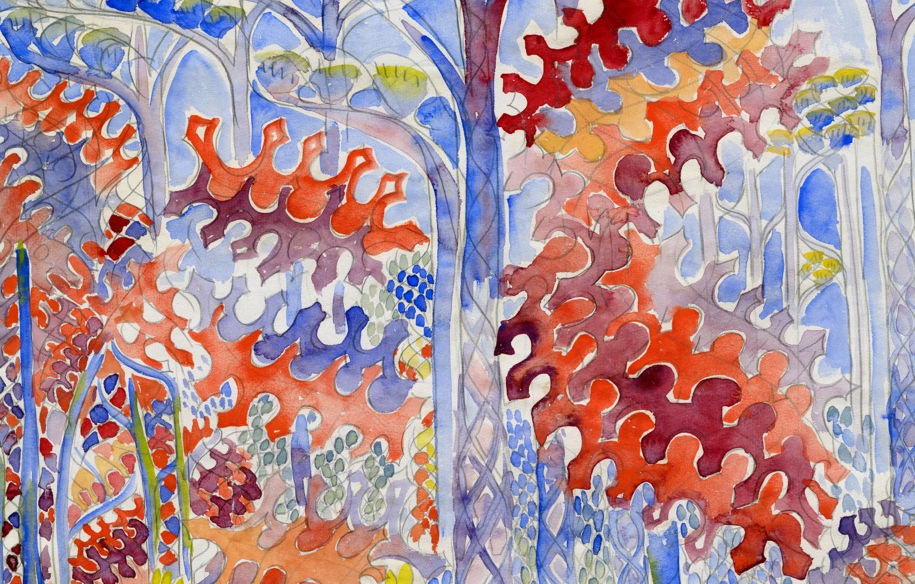
ON VIEW:
OCTOBER 26, 2023 - ONGOING
Walter Anderson died in 1965. For the last fifteen years of his life, he lived alone in a little cottage on his family’s property, called Shearwater. After his death, Anderson’s widow discovered his almost complete life’s work within that cottage. Paintings, drawings, sculptures, linoleum blocks, travel writings, ceramics and so much more were found within its walls. She writes in her memoirs, “All that we found in the cottage is testimony to his realization, his torment, and his exultation. It was eloquent testimony speaking to time itself.”
From the discovery of this trove of artistic output, the Walter Anderson Museum of Art was founded. Its intent was to preserve and display the work of Walter Anderson in the place it was created.
The Collected Works exhibition follows in this same vein, and explores Walter Anderson’s art through the times and places in which it was created.
Walter Anderson’s artwork changed dramatically over his career. He experimented widely with different styles, media, and historic modes of human expression. From his early career to his final days drawing from his hospital window in New Orleans, Anderson explored and interpreted the world around him through art.
A common theme throughout Anderson’s work is the search for connection with the natural world. This theme appears in his art, writings, and the ways that he sought out inspiration. Anderson writes, “In order to realize the beauty of humanity we must realize our relation to nature.” He spent his career observing the plants and animals of his home in Mississippi, the interactions between humans and their environments, and what he saw as moments of mystical communion with nature.
PRESENTED BY











